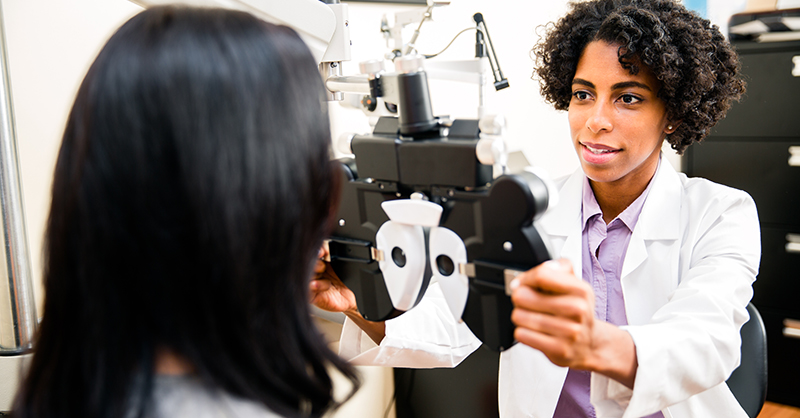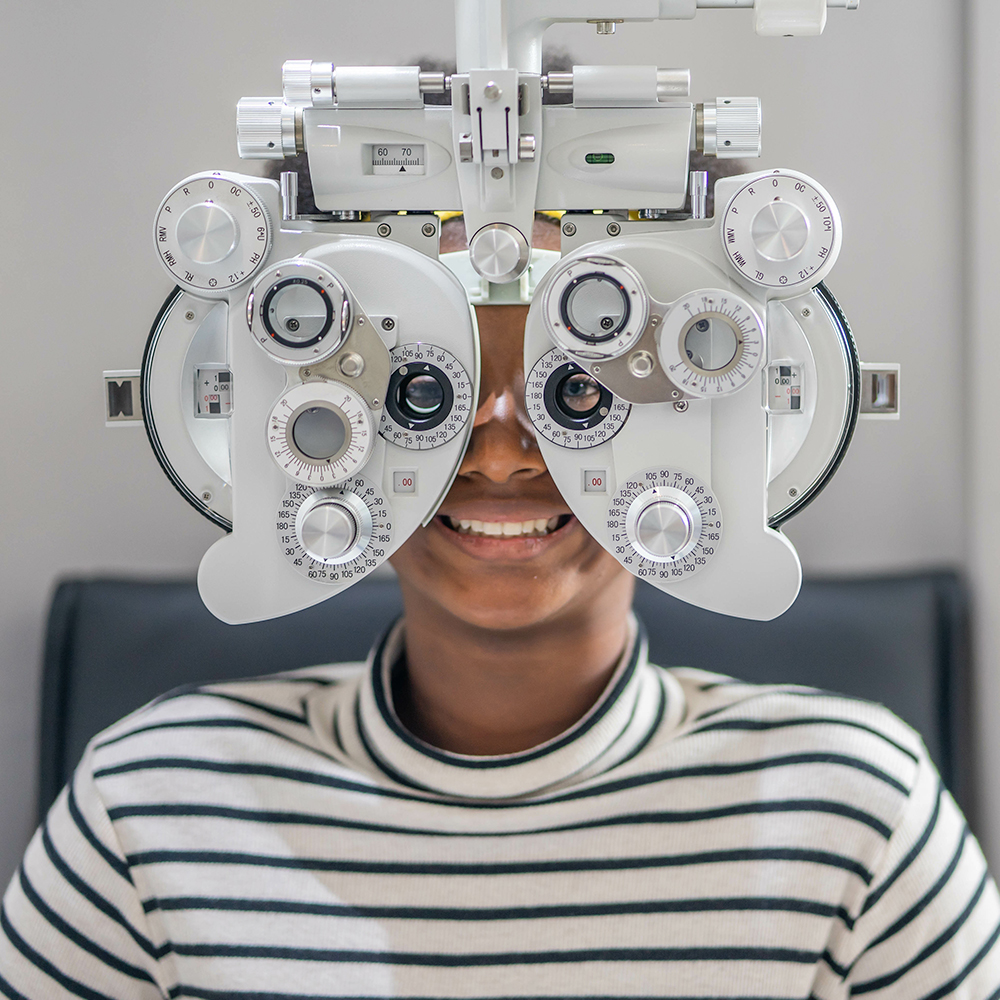Why Choosing an Eye Doctor Optometrist is Important for Your Eyes
Why Choosing an Eye Doctor Optometrist is Important for Your Eyes
Blog Article
Exploring the current Technological Innovations in Optometry and What They Mean for Eye Doctors
In the ever-evolving area of optometry, recent technological improvements are reshaping just how practitioners come close to eye treatment. From the precision of Optical Comprehensibility Tomography to the nuanced understandings used by AI-driven analysis devices, these developments are establishing brand-new criteria in client assessment and treatment. Teleoptometry is positioned to redefine access, ensuring that know-how transcends geographical restrictions. As these developments penetrate the practice, optometrists are encountered with the obstacle of embracing these tools to improve patient outcomes. Yet, the question continues to be: how will these technical changes redefine the roles and obligations within the occupation?
Developments in Diagnostic Devices
Progressing the area of optometry, technologies in diagnostic devices have actually transformed the way eye care experts evaluate and identify eye conditions and aesthetic disabilities. The previous decade has actually seen considerable technological advancements, making it possible for more thorough and accurate assessments.
An additional trick innovation is the intro of advanced corneal topography systems, which map the surface curvature of the cornea with accuracy. These devices are particularly useful for suitable call lenses and diagnosing corneal conditions. Furthermore, digital retinal imaging has transformed traditional ophthalmoscopy, providing comprehensive, panoramic sights of the retina that promote thorough aesthetic exams.
The development of wavefront aberrometry has additionally been crucial, enabling the evaluation of refractive mistakes with unequaled accuracy (Optometrist Chino). This modern technology assists in customizing restorative lenses and improving medical outcomes for refractive surgeries. Jointly, these diagnostic innovations encourage optometrists to supply premium individual treatment, ensuring very early treatment and customized therapy approaches, eventually boosting visual health results
AI in Individual Monitoring
Structure on the foundation of sophisticated diagnostic tools, the consolidation of fabricated intelligence (AI) in client administration represents a transformative jump for optometry. AI systems are progressively employed to enhance performance, precision, and personalization in person care.
Furthermore, AI-driven platforms assist in streamlined individual communications and management procedures. Automated organizing, online assessments, and customized follow-up strategies not just enhance patient complete satisfaction but likewise maximize time management for practitioners. These systems can triage individuals based on the necessity of their problems, making certain that those in essential demand receive prompt focus.
Additionally, AI improves decision-making by providing eye doctors with evidence-based recommendations and therapy paths. By integrating information from electronic health records, AI tools provide insights that educate professional decisions, minimizing the risk of errors and improving patient outcomes. As AI continues to evolve, its function in person monitoring will likely broaden, reshaping the landscape of optometric care.
Breakthroughs in Retinal Imaging
In the world of optometry, retinal imaging has actually witnessed impressive technical innovations that are improving diagnostic capabilities and individual treatment. Advancements such as Optical Coherence Tomography (OCT) and fundus digital photography have reinvented just how optometrists evaluate the retina and picture. OCT, particularly, gives high-resolution, cross-sectional images of the retina, permitting for the in-depth examination of its layers. This capability is vital for very early detection and monitoring of conditions like glaucoma, diabetic retinopathy, and age-related macular degeneration.
Improved imaging modalities like OCT angiography are further refining analysis precision. This non-invasive technique maps blood flow in the retina, providing vital understandings into vascular health and wellness without the requirement for color shots. In addition, flexible optics modern technology is being integrated into retinal imaging systems to deal with ocular aberrations, providing unprecedented image clearness. Such improvements assist in the get redirected here identification of min retinal adjustments that might indicate illness development.
Additionally, innovations in expert system are increasing retinal imaging by making it possible for automatic analysis of huge datasets. These systems help optometrists in recognizing patterns a sign of pathology, thus boosting diagnostic precision and effectiveness. Jointly, these advancements are changing retinal imaging right into a cornerstone of contemporary eye care, improving results and broadening therapeutic opportunities.
Teleoptometry's Expanding Role
Teleoptometry is increasingly becoming an important part of eye treatment, driven by innovations in digital communication and analysis devices. This is especially useful in underserved and rural areas where accessibility to specialized eye care is often restricted.
The combination of synthetic knowledge (AI) more improves teleoptometry, enabling the evaluation of visual data and helping in the detection of ocular problems such as glaucoma and diabetic person retinopathy. AI-powered algorithms can swiftly interpret complex imaging information, offering eye doctors with important insights that bolster professional decision-making.
Additionally, teleoptometry supports continuity of care through seamless integration with electronic health documents (EHRs), allowing eye doctors to keep detailed person histories. When consulting with various practitioners., this makes sure that clients receive individualized and consistent care also.
In spite of these benefits, challenges continue to be, consisting of making certain information safety and security and taking care of person assumptions. Teleoptometry represents a substantial stride in the direction of even more easily accessible, efficient, and patient-centered eye care. As technology develops, its role is poised to broaden even more.

Future Patterns in Eye Care
A myriad of innovative trends is set to reshape the future of eye care, driven by technical advancements and the progressing needs of clients. One substantial pattern is the combination of expert system (AI) in diagnostics, which guarantees to enhance the accuracy and effectiveness of eye evaluations. AI formulas can evaluate large quantities of information from retinal pictures, possibly spotting problems like diabetic person retinopathy and glaucoma earlier than conventional methods.
In addition, tailored basics medicine is gaining traction in optometry, with genetic testing informing customized therapy plans. This technique aims to enhance individual results by customizing treatments to private genetic accounts. Wearable technology, such as clever contact lenses, is also imminent, providing real-time tracking of intraocular pressure or sugar levels, thus supplying constant insights right into systemic and ocular health and wellness.
The adoption of augmented reality (AR) and virtual fact (VIRTUAL REALITY) in training and person education is one more arising fad. These modern technologies provide immersive experiences that can enhance understanding and abilities both for eye doctors and clients. As these fads develop, eye doctors need to remain abreast of technological improvements to give sophisticated care, making sure enhanced client outcomes and contentment in the vibrant landscape of eye care.
Final Thought

Jointly, these analysis innovations encourage optometrists to supply remarkable individual care, making certain early treatment and tailored treatment techniques, inevitably boosting aesthetic health and wellness end results.

As these technologies continue to advance, optometrists should adjust and incorporate them right into method, inevitably maximizing operations performance and elevating the requirement of eye treatment delivered to people.
Report this page